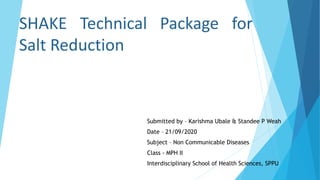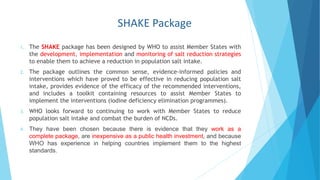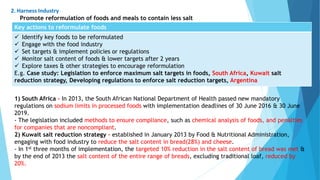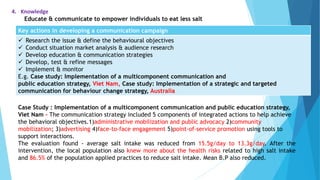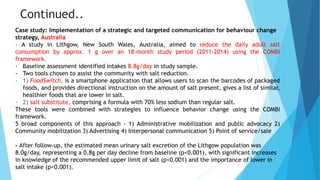The document summarizes the SHAKE Technical Package for Salt Reduction submitted by Karishma Ubale & Standee P Weah. The SHAKE package was designed by WHO to help countries develop, implement, and monitor salt reduction strategies. It outlines effective policies and interventions to reduce population salt intake, including surveillance of salt consumption, harnessing industry to reformulate foods, adopting food labeling standards, public education campaigns, and supporting salt reduction in community settings. The package provides tools and case studies to guide national salt reduction programs.
